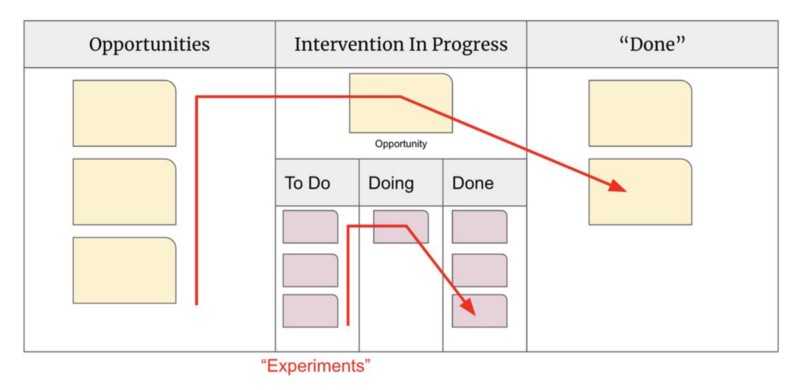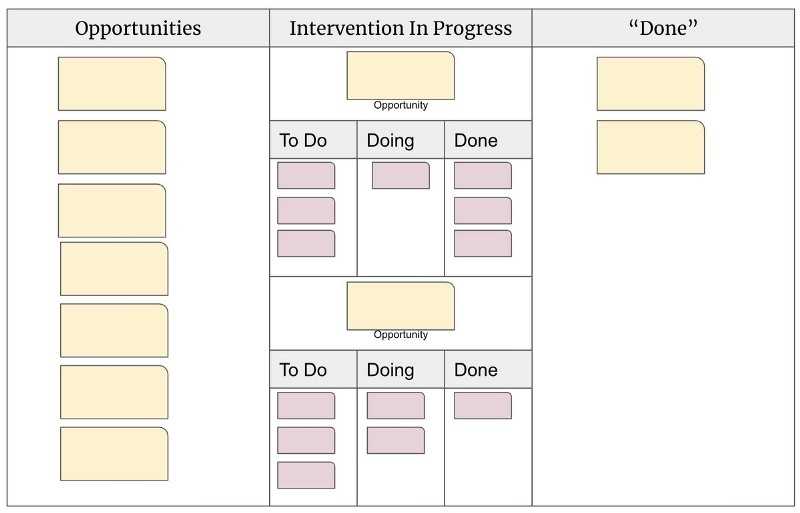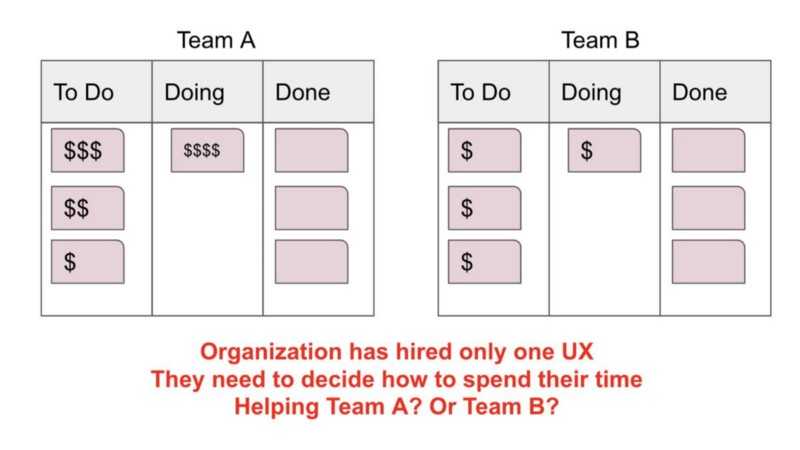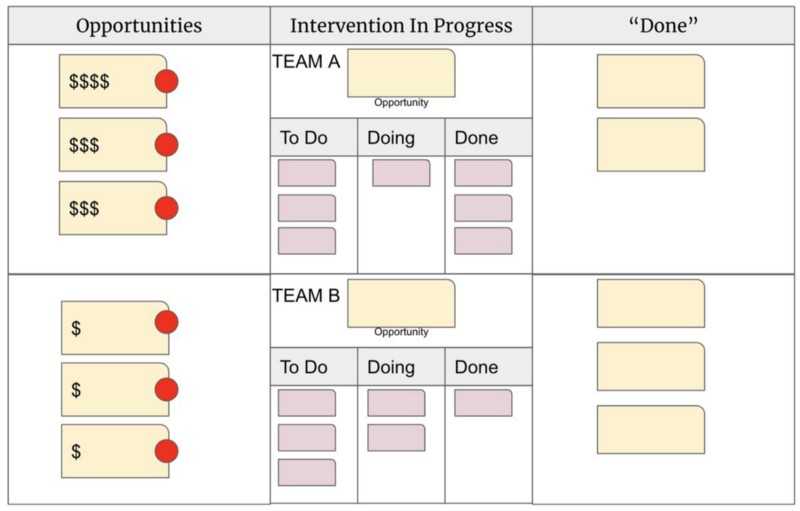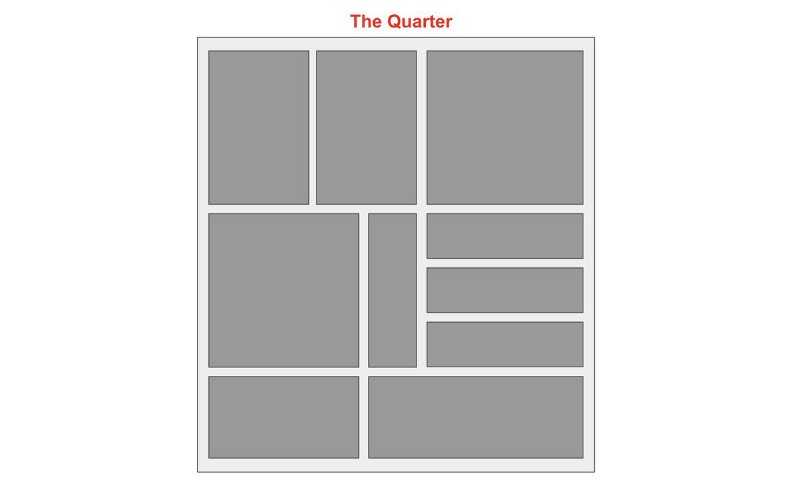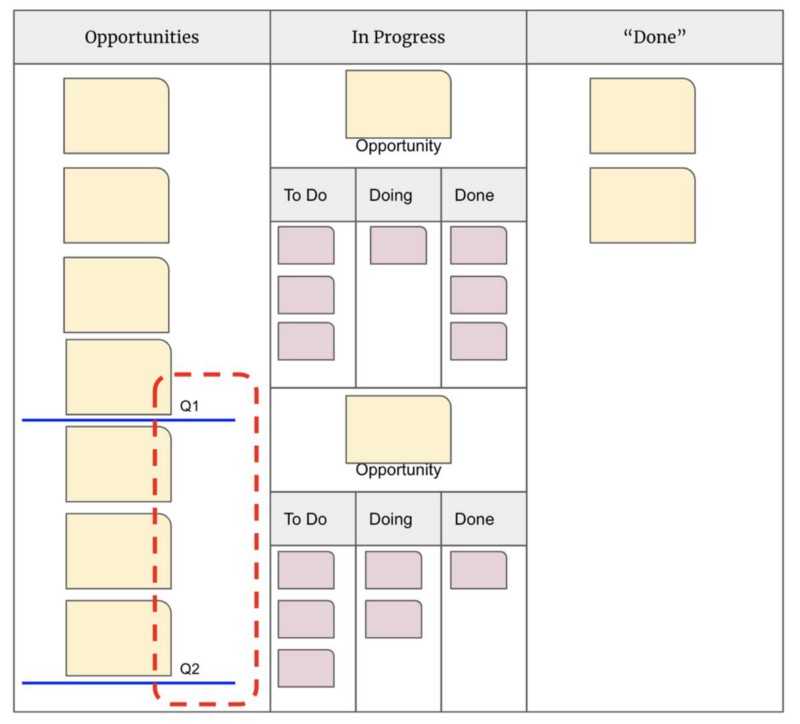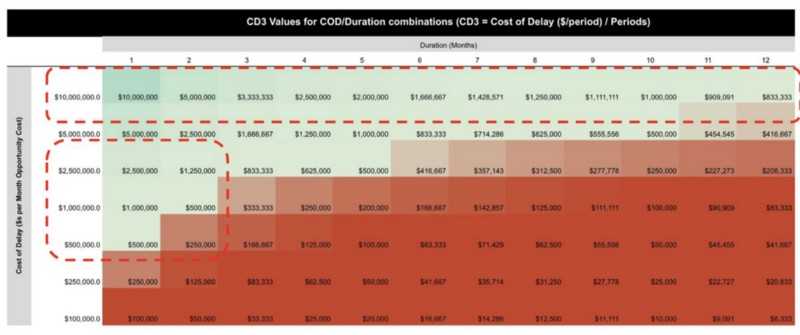Converting some of my longer Twitter threads to posts.
This is a super basic hybrid Kanban board. The basic idea is that we prioritize opportunities to tackle, pull the topmost opportunity, and then run experiments to “intervene” and generate an outcome.
This can scale to multiple teams. Here we have two “opportunities” in progress.
So why not just give teams their own backlogs? Why do we even need to view this on one board? Well..chances are the teams don’t have 100% dedicated team members. To do their job, roles like Ops, Marketing, UX will need an overview.
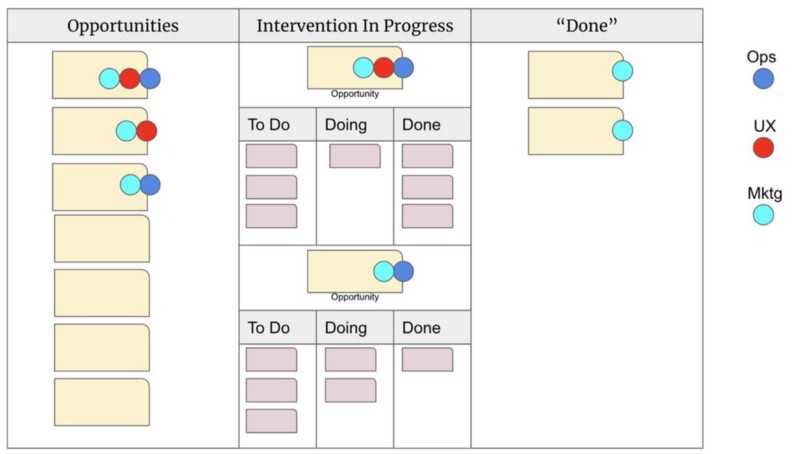 If we don’t have a single prioritized list, it will take extra work for UX (in this example)
If we don’t have a single prioritized list, it will take extra work for UX (in this example)
to decide whether to help Team A or Team B.
Team A is the right place to focus.
Visualizing it like this could help, and might better reflect reality…though you’d have to ask why Team B is working on something 1/4 the value. Is there anything better they could be working on?
For teams that make quarterly commitments, what you observe is a box filling problem. Just like “sprints”, you’ll see teams try to optimize how much work they can fit into the quarter, pre-solution to “reserve” shared services, etc.
The problem with this…is that to fill the box, you’ll try to figure out the size of the packages. So you get this solutioning step right here. This can occupy a big chunk of PM/designer/eng time…and often happens w/o involving the whole team. Problematic.
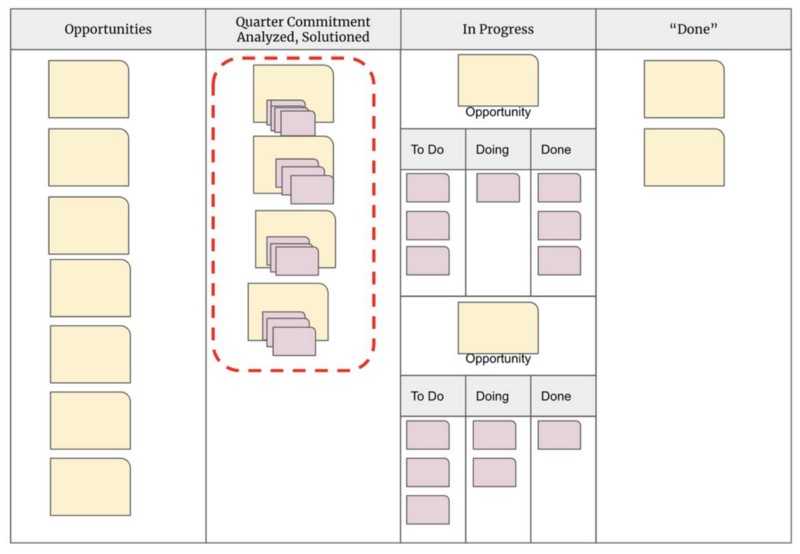 The rationale for qrtr filling is that “the biz” (and all the people trying to manage shared services)
The rationale for qrtr filling is that “the biz” (and all the people trying to manage shared services)
want to see something like this so they can plan ahead. Sounds reasonable…except planning this way enacts a very high price.
Why? Pre-solutioning. Big batches. Etc.
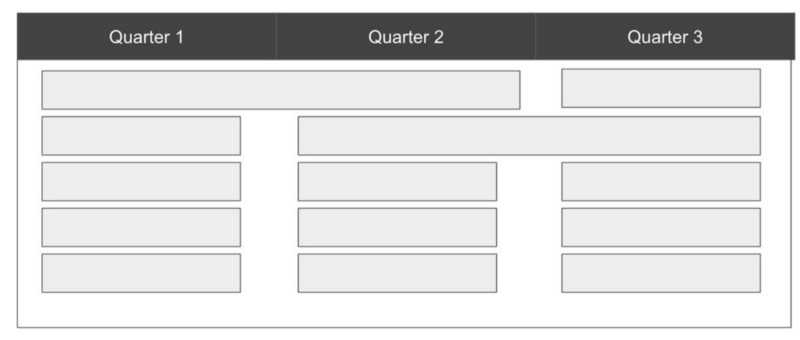 Luckily there is an alternative. Take an organization I worked with … 90% of the time, this org “pulled” new opportunities between every 25 days and 35 days. That made it pretty easy to do something like this (and the didn’t need to pre-solution)
Luckily there is an alternative. Take an organization I worked with … 90% of the time, this org “pulled” new opportunities between every 25 days and 35 days. That made it pretty easy to do something like this (and the didn’t need to pre-solution)
:
There’s another very important point here. In many cases you’ll find value in doing two types of work
- Very valuable, size unknown, experiment friendly
- Size known very small, med-high valuable If very valuable goes “long”…that’s ok. It’s valuable!
In summary:
- There are benefits to program level boards
- even when you have theoretically “dedicated” teams
- when possible, “start together” and avoid pre-solutioning
- quarter packing = antipattern
- alternatives exist to give reasonable forecasts
- VALUE!
